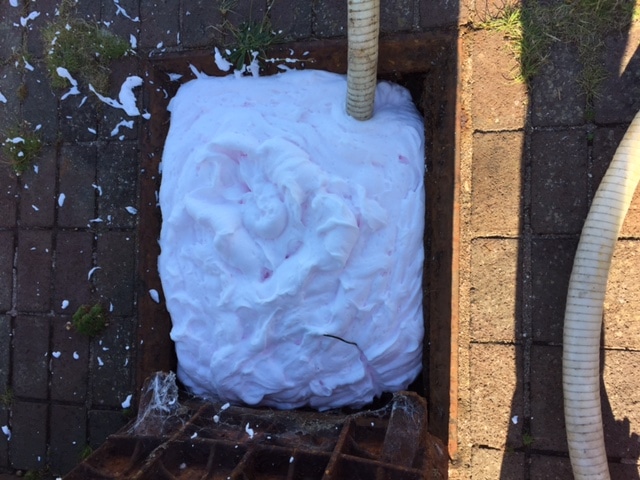Tank Foam Filling Guide
The object of this article is to provide information on what foam filling is, the process of foam filling a tank and benefits of choosing to have a tank foam filled. This guide can be utilised for both domestic and commerical underground fuel and oil storage tanks. It must be recognised that any works on fuel and oil tanks should be carried out by a competent and experienced contractor. The contractor should adopt practices in line with guidance such as ‘Design, Construction, Modification, Maintenance and Decommissioning of Filling Stations (4th Edition), OFTEC Technical Book 3, HSE Guidance and Best Practice and all legal duties set out under the Health and Safety at Work Act 1974.What is Tank Foam Filling?
Foam filling tanks is a simple method of decommissioning a fuel or oil tank in its current position as not all oil tanks can be safely removed. For example; your tank could be located in a difficult area to access. We are able to foam fill tanks in order to render them safe in situ. Foam filling can save both inconvenience and money when compared to the removal of a tank, but may not be suitable when building work is to be conducted. Foam is also a great alternative to concrete filling, as this tends to be a more permanent solution and makes it near impossible to remove the tank in the future. Furthermore, concrete filling has a tendency to ‘pyramid’. This can create gaps in the tank where vapours can still be present. Click here to see our case study on a substandard concrete fill project that was previously deemed decommissioned and shows an example of the dangers of ‘pyramiding’.The Process
Should you decide that tank removal is not the option for you, then decommissioning the tank with RG (Resin Generated) foam is the most cost-effective and environmentally friendly method. In many occasions, the tank does not require a full clean, just the removal of liquid from the bottom of the tank via pumping. This ensures that if the shell of the tank ever becomes compromised, no hazardous liquid can seep from the tank into surrounding areas. The foam can then be dispensed directly into the tank from the top of the hatch. If any residual liquid is at the bottom, the foam absorbs this and makes safe any remaining hydrocarbons. Lowering the risk of hazardous emissions. With tanks that have stored petrol, the local licensing authority would be informed and a safe system of work submitted for approval. Like described above, the tank will be bottomed out via pumping from a probe and suction lines and any liquid removed. Ventilation of the tank would then take place before the foam filling can commence. The foam would then be dispensed through the flange up to the tanks capacity. A certificate of decommissioning would then be issued for your records.Why Choose Tank Foam Filling?
There are many reasons why foam filling is the best option for you.- The foam filling process is quick and easy, preparing the tank and dispensing the foam can be done with as little disturbance to your site as possible.
- The foam is non-toxic and will protect the tank walls from corrosion.
- Foam has a lower cost per cubic metre. Because of this, larger tanks are often more cost effective to foam fill. Concrete filling typically has a higher cost per cubic metre and if filled to a poor standard, can leave them in a potentially dangerous state.
- If in the future you decide you would like to reuse or dispose of the tank, the foam can be safely removed and disposed of and the tank can be operational again. Concrete filling a fuel tank would mean it would render it permanently inoperable.
- The foam weighs only 25kg per 1000 litres, making the removal of it simple. To remove a concrete filled tank requires specialist cold cutting equipment such as non-sparking chisels to allow the residual petrol product and vapours to be safely removed. Once safely opened, the product inside can be excavated and disposed of in the correct manner. This all at an additional cost.

